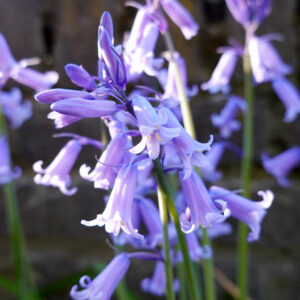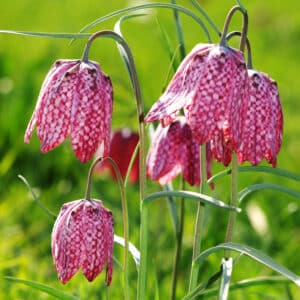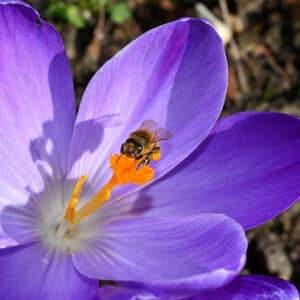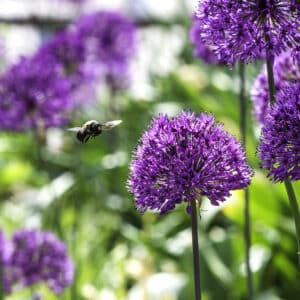Precious Pollinator Bulbs
Did you know that spring blooming bulbs are vital to our precious pollinators’ health and even their existence?
After a long winter of hive hibernation and diminishing food reserves, honeybees will set out on warm, early-spring days seeking nectar and pollen to feed their hungry colony. It’s not only crucial that they have plenty of food early on but throughout the entire season as well. Colorful flowers attract honeybees; however, they do have favorite colors and are most charmed by shades of blue and purple.
We’ve put together a list of the best fall-planted bulbs that bloom in a variety of alluring colors to entice and nourish our precious spring pollinators. Tulips (Tulipa) and Daffodils (Narcissus) should be included in this list of important pollinator plants, and both of these offer several selections that will bloom in early, mid, and late spring.
Early Spring
- Crocus (Crocus)
- Glory of the Snow (Chionodoxa)
- Iris (Iris reticulata)
- Siberian Squill (Scilla)
- Snowdrops (Galanthus)
- Winter Aconite (Eranthis)
- Wood Anemone (Anemone)
Mid Spring
- Chequered Lily (Fritillaria)
- Dutch Hyacinth (Hyacithus)
- Grape Hyacinth (Muscari)
Late Spring
- Ornamental Onions (Allium)
- Quamash (Camassia)
- Spanish Bluebells (Hyacinthoides)
Bulbs: Easy to Grow
Because they require very little care and maintenance, bulbs are ideal for the busy gardener that wishes to protect our pollinators. There are just three simple steps to a lovely and lively spring bulb garden.
- Dig: Dig the hole of an appropriate depth for the bulb size. The general rule of thumb: plant at the depth or three times the height of the bulb.
- Drop: Drop the bulb in the hole, covering it firmly with soil and a layer of mulch if desired.
- Done: That’s it – the bulb will do the rest with the nutrients it has stored. Just be sure it has water at the appropriate time, and the blooms will amaze you.
















